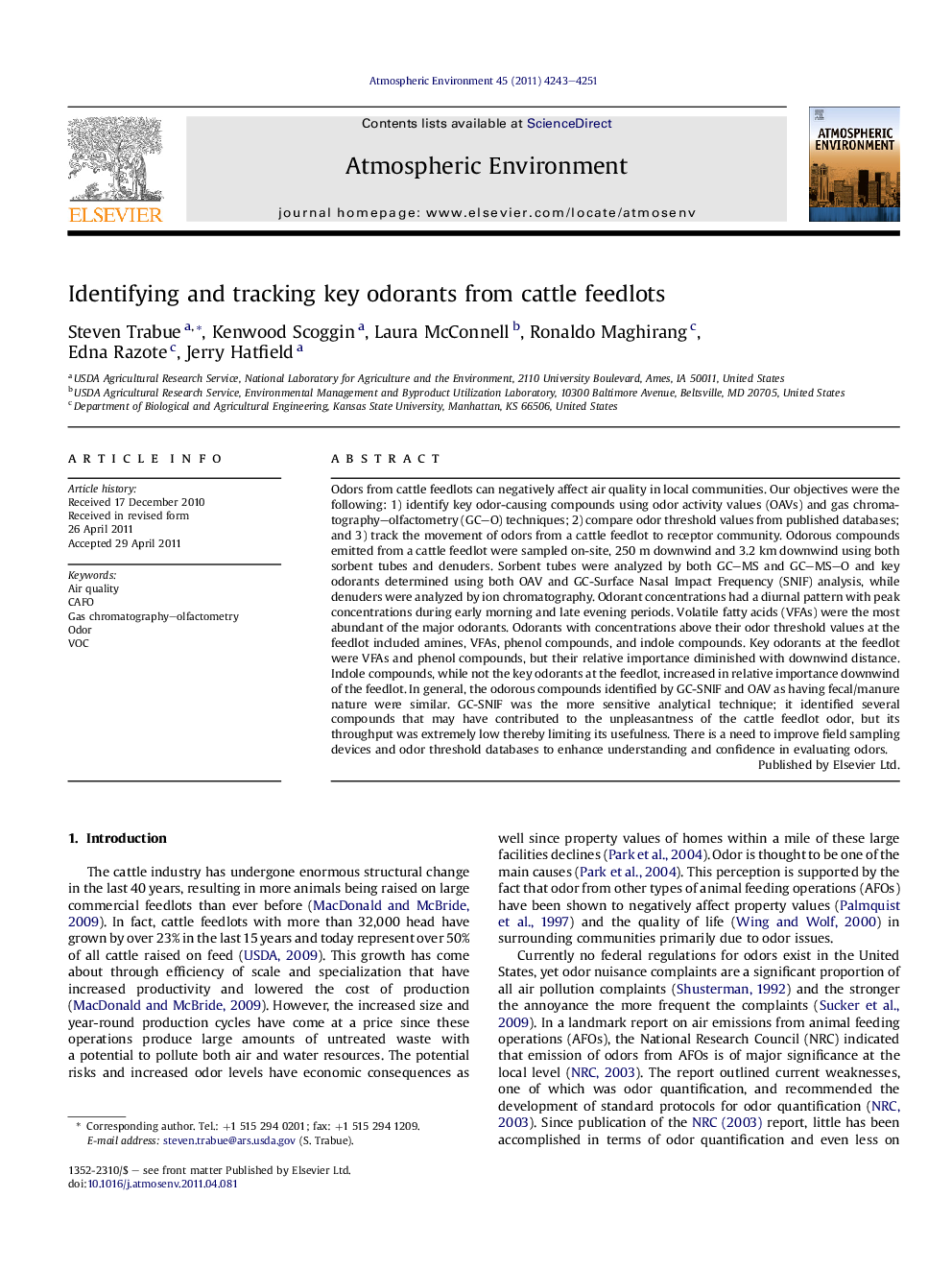| کد مقاله | کد نشریه | سال انتشار | مقاله انگلیسی | نسخه تمام متن |
|---|---|---|---|---|
| 4439547 | 1311024 | 2011 | 9 صفحه PDF | دانلود رایگان |

Odors from cattle feedlots can negatively affect air quality in local communities. Our objectives were the following: 1) identify key odor-causing compounds using odor activity values (OAVs) and gas chromatography–olfactometry (GC–O) techniques; 2) compare odor threshold values from published databases; and 3) track the movement of odors from a cattle feedlot to receptor community. Odorous compounds emitted from a cattle feedlot were sampled on-site, 250 m downwind and 3.2 km downwind using both sorbent tubes and denuders. Sorbent tubes were analyzed by both GC–MS and GC–MS–O and key odorants determined using both OAV and GC-Surface Nasal Impact Frequency (SNIF) analysis, while denuders were analyzed by ion chromatography. Odorant concentrations had a diurnal pattern with peak concentrations during early morning and late evening periods. Volatile fatty acids (VFAs) were the most abundant of the major odorants. Odorants with concentrations above their odor threshold values at the feedlot included amines, VFAs, phenol compounds, and indole compounds. Key odorants at the feedlot were VFAs and phenol compounds, but their relative importance diminished with downwind distance. Indole compounds, while not the key odorants at the feedlot, increased in relative importance downwind of the feedlot. In general, the odorous compounds identified by GC-SNIF and OAV as having fecal/manure nature were similar. GC-SNIF was the more sensitive analytical technique; it identified several compounds that may have contributed to the unpleasantness of the cattle feedlot odor, but its throughput was extremely low thereby limiting its usefulness. There is a need to improve field sampling devices and odor threshold databases to enhance understanding and confidence in evaluating odors.
► Odors from feedlots were monitored using chemical and GC–O techniques.
► At the feedlot, volatile fatty acids and phenols were the key odorants.
► Downwind indole compounds become the key odorant.
► GC–O is analytically more sensitive for odors than chemical techniques.
► Odor threshold databases limited for chemical analysis of odorants.
Journal: Atmospheric Environment - Volume 45, Issue 25, August 2011, Pages 4243–4251